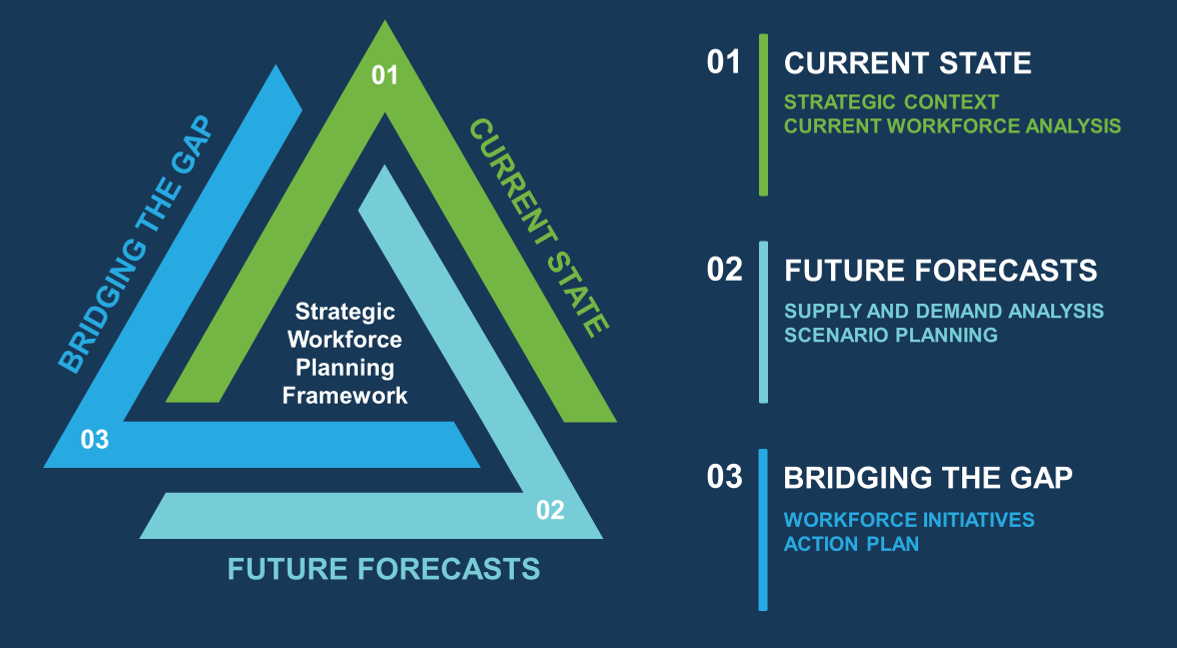Framework overview

Queensland Health developed the strategic health workforce planning framework to support health service organisations in planning their workforce effectively. Whether developing a medium- to long-term workforce strategy, these resources can guide through every step of the planning process.
Key Resources
The Queensland Health strategic workforce planning framework and playbook (PDF 1841 kB) is a comprehensive guide that serves as the primary resource for strategic workforce planning.
Context and Integration
Set within the unique context of Queensland's healthcare system, the framework seamlessly integrates with various strategic, service, and other planning processes.
Built on Best Practices
Developed from a strong foundation of published best practice methodologies, tools, and templates, the framework provides access to the most effective strategies. Sources are acknowledged where appropriate.
-
Strategic workforce planning positions the workforce to meet an organisation's strategic and service objectives. This involves a systematic process of evidence gathering, scenario planning, strategy development, action planning, and review. The planning timeframe typically spans 5 to 10 years, differing from the shorter timeframe of operational planning.
Integration with Other Planning Cycles
Strategic workforce planning processes should be closely integrated with the planning cycles for health services, capital works, and digital and medical technology.
Focus Areas
The process targets changes in various workforce characteristics over the medium- to long-term, including:
- Capacity
- Capability
- Sustainability
- Diversity
- Design
- Culture
- Wellbeing
- Performance
Key Output
A key output of the planning process is an evidence-based workforce strategy. This document outlines a clear set of workforce priorities for the health service organization and provides details of strategies to be implemented via action plans.
-
The framework offers an evidence-based, cyclical strategic health workforce planning process with three key phases:
- Understand strategic context and current workforce state.
- Analyse workforce supply and demand projections.
- Define and plan workforce initiatives to bridge gaps.
For the process to be successful, a strong foundation of leadership, engagement, and governance mechanisms and processes is essential.
Step-by-Step Activities
Each phase incorporates essential activities that build upon the previous phase. Tools, templates, and tips are available at each stage to support the process.
Click on the diagram for a closer look at the planning process.
-
Strategic Workforce Planning Tips
Strategic workforce planning may add significant value to the medium- to long-term operation and effectiveness of an organisation. Keep these key messages in mind:
Plan Within Capacity:
Start small and gradually improve and integrate planning systems over time.
Adopt Principles:
Follow the principles of simplicity, improvement, integration, engagement, innovation, and alignment.
Keep It Real:
Ensure strategies are realistic and achievable, matching available capacity and capability.
Measure Outcomes:
Define clear outcomes and measures to assess and report on performance, informing future strategies.
-
For further information about strategic workforce planning for the health sector, including implementation of the framework, contact Workforce Strategy Branch, Department of Health at WFPAdvisory@health.qld.gov.au
